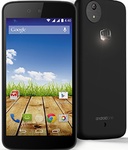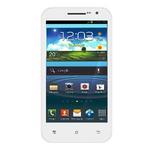Vivo X50 Review - Android
Premium midrange is a smartphone category that’s starting to become more popular. The Vivo X50 is one of them and it aims to bring select flagship-level features if you want something more than a basic midrange phone. Its bigger brother, the Vivo X50 Pro, made a lot of buzz as the first smartphone to have […] More
This article, Vivo X50 Review, was originally published at NoypiGeeks | Philippines Technology News, Reviews and How to's.
Premium midrange is a smartphone category that’s starting to become more popular. The Vivo X50 is one of them and it aims to bring select flagship-level features if you want something more than a basic midrange phone.
Its bigger brother, the Vivo X50 Pro, made a lot of buzz as the first smartphone to have gimbal camera stabilization. This vanilla model lacks that, but still has a couple of things to offer on the table. That’s what we’ll be checking out in our Vivo X50 review.
Vivo X50 Specs
- Android 10, FunTouch 10.5
- Dual SIM, Dual standby
- 6.56-inch FHD+ AMOLED display, 2376 x 1080 pixel resolution, ~398ppi
- 90Hz refresh rate, HDR10+
- 2.4GHz Qualcomm Snapdragon 730 octa-core processor
- Adreno 620 GPU
- 8GB RAM
- 128GB internal storage, non-expandable
- 32-megapixel front camera, f/2.5
- 48-megapixel (f/1.6, PDAF, OIS) + 8-megapixel (ultra-wide) + 13-megapixel (portrait, 2x optical) + 5-megapixel (macro) rear cameras, Dual-tone flash
- In-display fingerprint scanner
- HSPA+, 4G LTE
- WiFi 802.11 a/b/g/n/ac, dual-band
- Bluetooth 5.1
- Dual-band GPS, A-GPS, GLONASS, BDS, GALILEO
- NFC
- USB Type-C
- Dimensions: 158.5 x 72.8 x 7.5mm
- Weight: 181.5g
- Colors: Black, Blue, Pink
- 4,200mAh non-removable battery, 33W fast charging
Design and Build Quality
We fell in love with the design of the X50 Pro in our full review. It’s really light and comfortable in the hands. Our impressions with the Vivo X50 is also like that. But this is slightly less premium and ergonomic because of its flat screen.
 Vivo X50 Pro | Vivo X50 | Vivo TWS earphones
Vivo X50 Pro | Vivo X50 | Vivo TWS earphonesThe back panel is still slightly curved to make it relatively comfortable to hold. It uses an unspecified frosted glass that’s prone to fingerprint marks — which you can prevent by slapping in the included clear case in the box.
What you’re looking at is the Frost Blue color, while a Glaze Black option is also available. A Pink version was revealed during its initial introduction abroad, which may arrive in the Philippines on a later date to keep it hyped up.

Taking a tour, we have the large 6.56-inch Super AMOLED screen and a punch-hole on the top left for the selfie camera. This makes the ultra-thin bezels possible.

We have the noise-canceling microphone on the top, as well as the subtle “Professional Photography” print that’s really hard to capture on camera.

We have the SIM tray on the bottom that, disappointingly, can only house two nano SIM cards — no microSD card slot future storage expansion. There’s also the USB Type-C and the loudspeaker here.
Vivo also omitted the headphone jack, but it does come with a Type-C to headphone jack adapter in the box.

The left side is clean, while on the other we have the volume controls and the lock/power switch. The physical buttons are tactile enough, although they feel a bit wobbly.

Vivo took the same design approach on positioning the cameras on the back. But this time, all three cameras are in a uniform vertical orientation, with the fourth sensor separated on the bottom and the quad-LED flash on the side.

Overall, the company did a great job in building the Vivo X50. It’s sleek, premium, and elegant to hold. You can tell that design is on the top of their priority when they created this device.
Display and Audio
The Vivo X50 shares an identical screen to the Pro model, minus the curve. It has a 6.56-inch FHD+ AMOLED panel, with a 2376 x 1080 pixel resolution, ~398ppi, fast 90Hz refresh rate, and HDR10+ — all the buzzwords you expect on a 2020 smartphone.

It goes without saying that the display quality is great. The OLED panel, as usual, provides vibrant colors and deep contrast. Screen brightness is also decent, but definitely not the brightest when using outdoors.
The 90Hz refresh rate also makes the overall device look and feel faster and smoother. But to conserve battery, there’s an option in the settings that allows the device to intelligently switch to 60Hz when needed, depending on what you’re doing.

For its price, there are things we wish to see on the Vivo X50 but we didn’t. One of them is a stereo speaker setup. Instead, we have a mediocre bottom-firing loudspeaker.
The lack of a headphone jack is also a bummer. So for a more immersive listening experience and to enjoy its Hi-Res certification, you can plug the included earphones or whatever audio device you have via the Type-C adapter. Or, you can check out a pair of TWS earphones like Vivo’s own TWS Neo.
Performance and Hardware
Spoiler: the Vivo X50 is a capable performer. The problem is, there are similarly-priced devices that have more powerful processors. This one comes with a 2.4GHz Qualcomm Snapdragon 730 octa-core chipset, while some devices already come with Snapdragon 765G for less.

But considering all the other impressive hardware this one has, we’ll give the underwhelming processor a pass.
Vivo X50 benchmark scores

In fact, paired with its 8GB of RAM and 90Hz screen, performance on this is actually really satisfactory. Basic and day-to-day tasks are seamless and easy todo.
However, the Adreno 618 might not be the best pair for hardcore gamers. But if you’re only into light games like Mobile Legends, or titles like PUBG Mobile Call of Duty Mobile running at high graphics, it will do just fine.

The Vivo X50 has a 128GB of storage. That’s more than enough to store all your apps and media. But if you plan on hoarding a lot of pictures or videos, then you’d might be dissappointed by its lack of microSD card slot for storage expansion.
Software and User Interface
Just like the Pro model, the Vivo X50 runs on the Android 10-based FunTouchOS 10.5 interface. It’s a much cleaner and straightforward UI than its predecessors and have been stripped off with unnecessary features.

One of the biggest changes is the relocated control center. Instead of coming from the bottom, it’s now on top of the notifications panel, just like in stock Android.
The app drawer is enabled out of the box, which you can quickly summon by swiping up of the home screen. You can opt for the iOS-like, no-app-drawer desktop in the settings. Moreover, swiping on the far left of the home screen reveals the Google search, top news, and weather.

Since it’s an Android phone, the Vivo X50 is heavy in customization. You can configure the home screen layout, icon design, lock screen magazine wallpapers, and more.
The Vivo X50 also has an AMOLED screen, so you can pick between different Always-On layouts, which shows relevant information (time, notifications, etc.) even when the screen is off. The Dynamic Effects section lets you choose between different fingerprint animations, charging, face unlock, and more. There’s also the Ambient Light effect, which lights up the corners of the screen when you receive notifications, sync with music, and more.

There’s the Ultra Game Mode feature that helps optimize the system and have other game-related adjustment to improve the gameplay experience.

Dark Mode is also present for a more subtle look that also help save you battery.
The camera app is convenient and easy to use. It even reminds you to clean the lens when it’s dirty so you can take the best possible image. Moreover, another most commonly used feature is the keyboard. The Vivo X50 uses the familiar Google Keyboard that’s easy to type on.
- Vivo X50 vs Realme X3 SuperZoom: Specs Comparison
Camera
We head to the main highlight of the Vivo X50 — the cameras. It starts with a 48-megapixel Sony IMX 598 sensor, which has a really bright f/1.6 aperture and PDAF. It also has an optical image stabilization (OIS), but not as crazy as the gimbal-like stabilization of its bigger brother.

There’s also an 8-megapixel ultra-wide camera, and a 13-megapixel lens that can do 2x of optical zoom made for taking portraits. The fourth camera was replaced with a 5-megapixel macro sensor from the periscope-style lens of the Pro model.
Now, let’s talk about image quality. The 48-megapixel main sensor takes incredibly bright, vibrant, and contrasty images. The shutter speed is kinda slow at times, especially if you’re taking pictures of moving subjects (i.e. dogs).
Low-light performance is great thanks to the large aperture and the camera app’s automatic one-second shutter speed.
Ransomware attacks vs Southeast Asian SMEs decline in first half of 2020
08/09/2020 02:16 PM
Realme C12 now available for P5,990
08/09/2020 08:12 AM
Reviewed - Logitech G604 Lightspeed Wireless
08/09/2020 02:47 AM
The MiLi PhonePure is a portable UV-C sterilizing pouch
08/09/2020 02:01 AM
Next-gen lithium-ion batteries could have 3x bigger capacity, study finds
08/09/2020 03:27 AM
Realme 7i specs, design, and release date leaked
08/09/2020 02:12 AM
Gaming - Valorant
08/09/2020 03:00 AM
GCASH and WWF ready 20,000 seedlings for Ipo Watershed
08/09/2020 10:12 AM
- HEALTH
- Comics
- Libraries & Demo
- Sports Games
- Racing
- Photography
- Transportation
- Media & Video
- Sports
- Health & Fitness
- Weather
- Medical
- Cards & Casino
- Arcade & Action
- Personalization
- Social
- Communication
- Productivity
- Casual
- Shopping
- Tools
- Brain & Puzzle
- Business
- News & Magazines
- Finance
- Lifestyle
- Music & Audio
- Entertainment
- Travel & Local
- Books & Reference
- Education
2014 © Filipino apps and news






